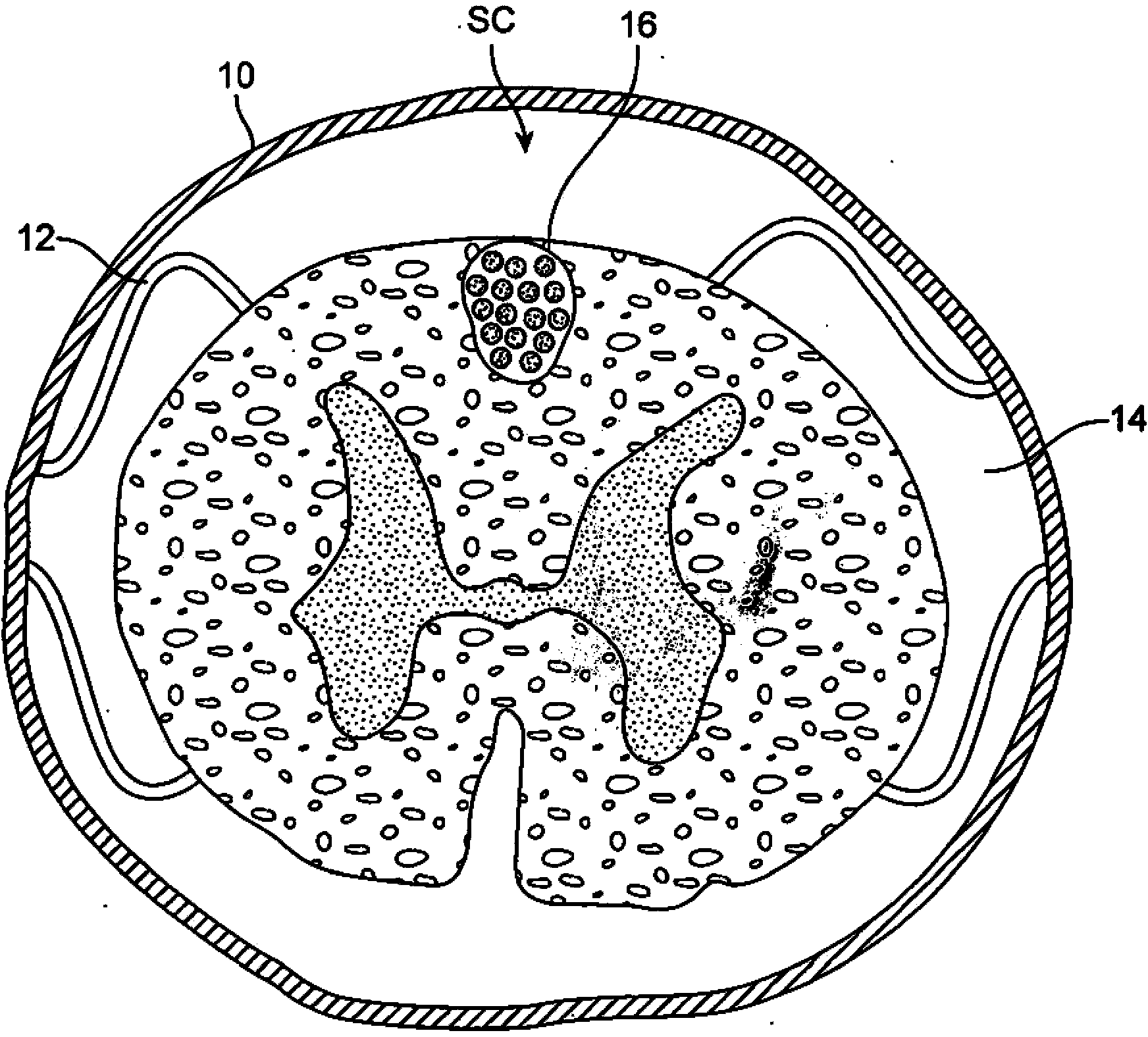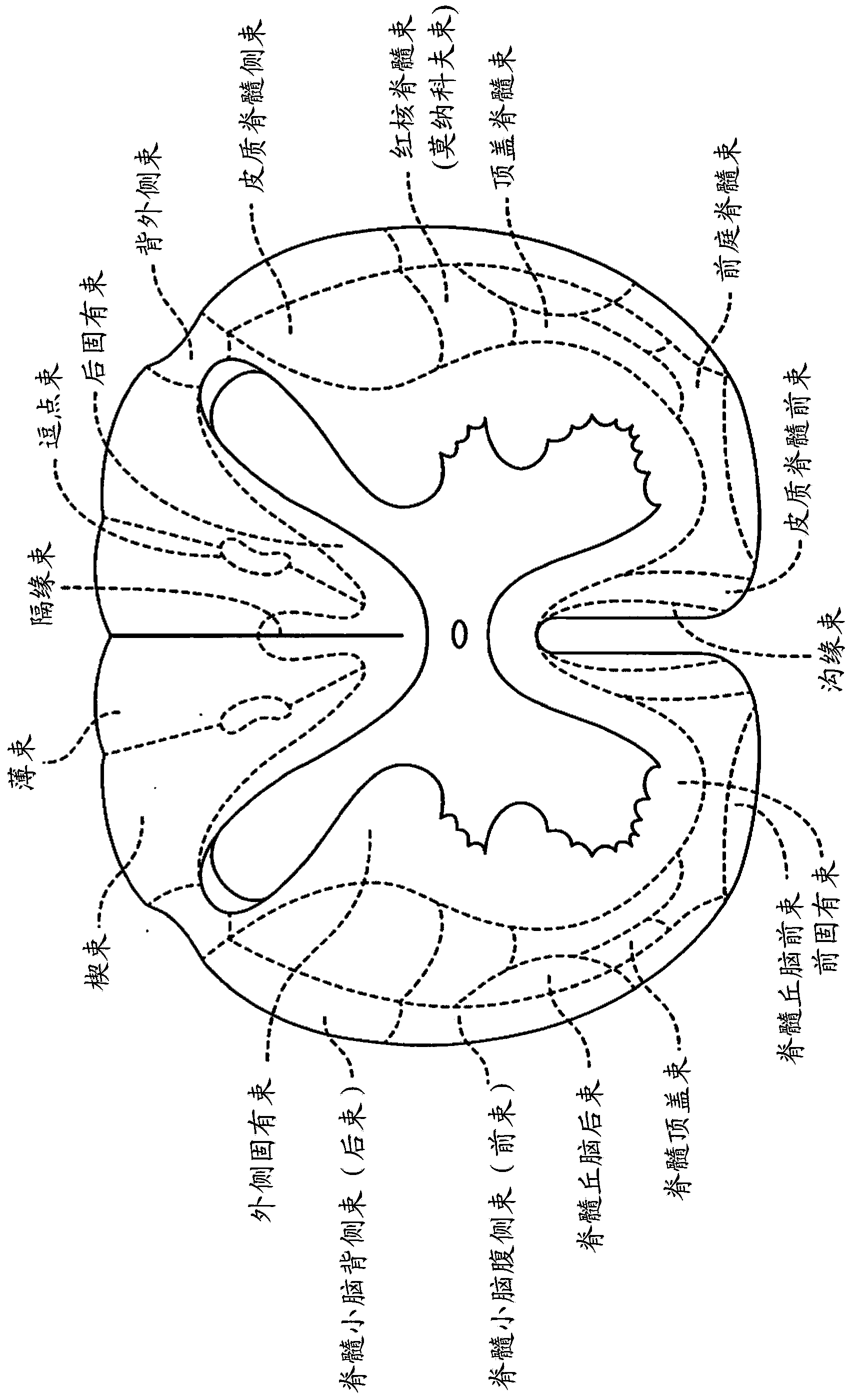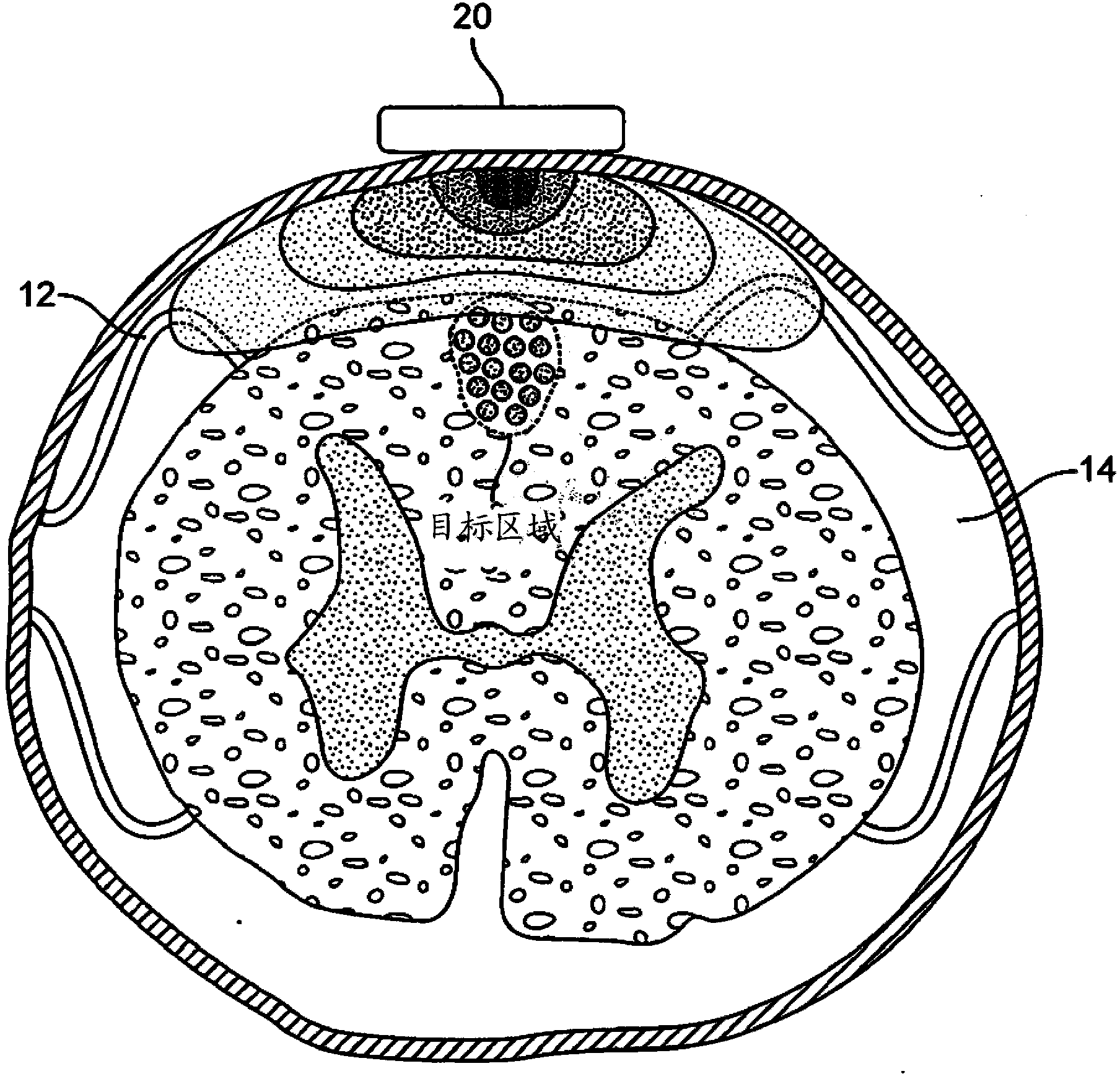Remotely controlled and/or laterally supported devices for direct spinal cord stimulation
A technology of spinal cord and electrical stimulation, applied in the direction of spinal nerve electrodes, treatment, internal electrodes, etc., can solve the problems that the body position sensor does not solve, and achieve the effect of well-designed and safe design
- Summary
- Abstract
- Description
- Claims
- Application Information
AI Technical Summary
Problems solved by technology
Method used
Image
Examples
Embodiment Construction
[0060] figure 1 A cross-sectional view showing selected anatomical elements of the spinal cord. These elements include the dura mater layer 10 that surrounds the spinal cord SC and encloses the spinal canal, the dorsal root nerves 12, the cerebrospinal fluid area 14 that separates the outer surface of the spinal cord from the inner surface of the dura mater, and the axons that are targeted by spinal cord stimulation instruments 16.
[0061] Figure 1A The complex anatomical layout of the postulated human spinal cord pathway is shown. In the large dorsal column pathways (f. gracilis, f. cuneatus), the activation of a large number of axons located at a depth greater than 0.5 mm below the pial surface is likely to lead to a greater increase in pain areas in humans. Wide body coverage and increased magnitude of pain attenuation effect. Activation of axons within deeply located dorsal midline structures (eg, septomarginal f., posterior proper f.) can lead to complete relief of ...
PUM
 Login to View More
Login to View More Abstract
Description
Claims
Application Information
 Login to View More
Login to View More - R&D
- Intellectual Property
- Life Sciences
- Materials
- Tech Scout
- Unparalleled Data Quality
- Higher Quality Content
- 60% Fewer Hallucinations
Browse by: Latest US Patents, China's latest patents, Technical Efficacy Thesaurus, Application Domain, Technology Topic, Popular Technical Reports.
© 2025 PatSnap. All rights reserved.Legal|Privacy policy|Modern Slavery Act Transparency Statement|Sitemap|About US| Contact US: help@patsnap.com



